Deserts, often depicted as barren and lifeless, are among the most extreme environments on Earth. With intense daytime heat, cold nights, and scarce water resources, it seems impossible that anything could survive in such a hostile landscape.
Nevertheless, deserts are home to a remarkable array of plant life, each species having developed unique strategies to not only endure but thrive in such conditions. These plants, often called xerophytes, reveal a secret world of adaptation and survival that is as fascinating as it is inspiring.
The harsh realities of desert life.
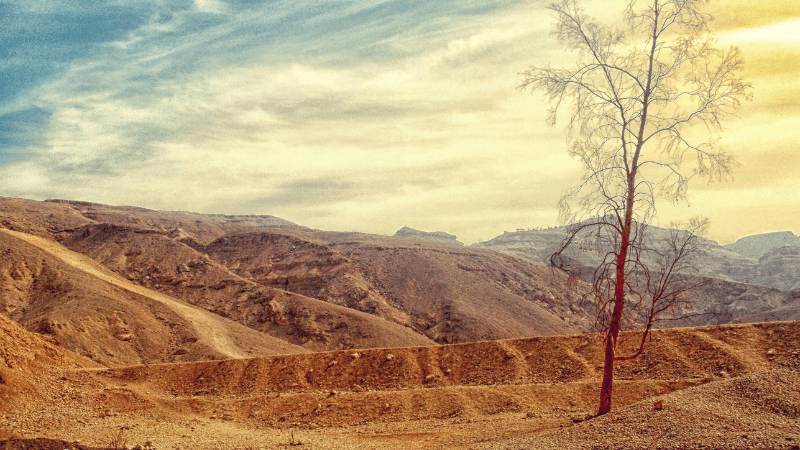
Before exploring the remarkable adaptations of desert plants, it is important to understand the environment in which they exist. Deserts are defined by their arid conditions, typically with less than 250 mm (10 in) of annual rainfall. This lack of water is exacerbated by extreme temperatures that can rise above 50 °C (122 °F) during the day and close to freezing at night.
Soils in deserts are often sandy or rocky, with little organic matter to provide nutrients. These factors combine to create one of the most difficult habitats on Earth.
Yet, within these harsh conditions, life persists. Desert plants have evolved over millions of years to develop survival strategies that allow them to cope with the challenges of extreme heat, water scarcity, and nutrient-poor soils. This adaptation is not just about survival; they are about growing up in an environment where few others can..
Water is the most important resource for any living organism, and in deserts, it is most precious. Desert plants have evolved a variety of strategies to capture, store, and conserve water, ensuring their survival during long dry periods.
One of the most popular adaptations is water storage. Succulent plants, such as cacti and agaves, have developed thick, fleshy tissues that can hold large amounts of water. This stored water is used during droughts, enabling plants to survive long periods without rain.
The ability to store water allows succulents to take advantage of the rare and often unpredictable rainfall in desert environments.
In addition to storing water, many desert plants have developed deep root systems that can tap into underground water sources. For example, the mesquite tree (Prosopis spp.) has roots that can extend more than 50 m (160 ft) deep, reaching water far below the surface. This adaptation allows the tree to survive in areas where surface water is virtually nonexistent.
Other plants, such as creosote bush (Lauraria tridenta), have shallow, extensive root systems that quickly absorb rain moisture before it evaporates. This strategy is particularly effective in capturing the short bursts of rain that are typical of desert environments.
Physiological Adaptations
Water Acquisition: In addition to water acquisition, desert plants must also minimize water loss to survive in their arid habitats. One of the most common strategies is leaf replacement.
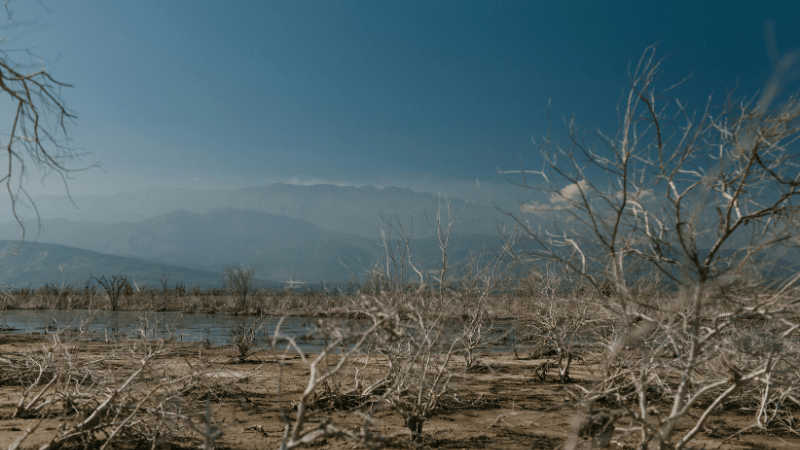
Many desert plants have small or waxy leaves that reduce the surface area through which water can be lost. For example, creosote bush has small, resin-coated leaves that help retain moisture.
Water abstraction refers to the process of obtaining water for various purposes, such as consumption, agricultural use, industrial processes, or environmental needs. This can include several methods depending on the context:
1 Natural Sources Collection of water from natural sources such as rivers, lakes, and groundwater wells.
2. Infrastructure Systems Use of infrastructure such as reservoirs, pipelines, and treatment plants to collect, store, and distribute water.
3. Desalination To make sea water suitable for drinking and irrigation by removing salt and other impurities.
4. Rainwater Harvesting Collecting and storing rainwater for later use, often through systems such as rain barrels or cisterns.
5. Recycling and Reuse Treating and reusing wastewater for various uses, including agricultural and industrial uses.
Water Storage: One of the most crucial adaptations is the ability to store water. Cacti, for example, have fleshy stems that can retain significant amounts of water. Their internal tissues are capable of swelling and shrinking as they absorb and release water, respectively. Similarly, succulents, such as aloe vera and agave, have thickened leaves or stems that serve as reservoirs for water.
Efficient Water Use: Many desert plants exhibit efficient water use by minimizing water loss. The saguaro cactus, for instance, has a thick, waxy cuticle that reduces evaporation. Additionally, its stomata—the tiny pores on the surface of leaves and stems—open only at night to minimize water loss.
Leaf Modifications:

Many desert plants have modified their leaves to reduce water loss. For instance, the mesquite tree has small, compound leaves that are less prone to water loss compared to larger, broad leaves. In some cases, leaves are reduced to spines, as seen in cacti, to minimize surface area and water loss while deterring herbivores.
Some plants have taken leaf metamorphosis to the extreme by reducing their leaves to spines. Cacti are perhaps the most famous example of this adaptation. Their spines not only reduce dehydration but also protect from herbivores. The green stems of cacti carry out photosynthesis, a process normally carried out by leaves in other plants.
The Role of Cacti in Desert Ecosystems:
Cacti are a family of plants, scientifically known as Cactaceae, that are uniquely adapted to survive in arid and desert environments. These plants are characterized by their thick, fleshy stems that store water, enabling them to withstand long periods of drought. Unlike most plants, cacti have spine-shaped leaves, which help reduce water loss and protect the plant from weeds.

Cacti are particularly suited to desert life because of their ability to perform a special form of photosynthesis known as CAM (Crassulacean Acid Metabolism). This process allows them to open their stomata — tiny holes used for gas exchange — at night instead of during the day, minimizing dehydration in the hot, dry conditions of the desert.
Another interesting adaptation is the ability of some desert plants to open and close their stomata – small openings on leaves that allow gas exchange. By opening their stomata at night when temperatures are cool and humidity is high, plants like Agave can reduce dehydration while taking in carbon dioxide for photosynthesis.
This process, called CAM (Crassulacean Acid Metabolism) photosynthesis, is an efficient way to balance the need for carbon dioxide with the need to conserve water.
Avoiding heat: temperature tolerance and insomnia.
Desert plants are also experts at dealing with extreme temperatures. Many plants have evolved the ability to withstand wide fluctuations in temperature, from extreme heat during the day to cold at night. Some plants, such as barrel cactus (Ferocactus spp.),
They have ribbed surfaces that expand and contract with temperature changes, allowing the plants to regulate their internal water pressure.
In addition to temperature tolerance, some desert plants have developed the ability to enter a dormant state during the hottest and driest periods of the year. During dormancy, these plants reduce their metabolic activity, conserving energy and water until conditions improve.
For example, desert lily (Hesperocallis undulata) remains dormant underground as a bulb during the dry summer months, emerging only after the winter rains bloom and set seed.
Nutrient acquisition: Thrive in poor soil
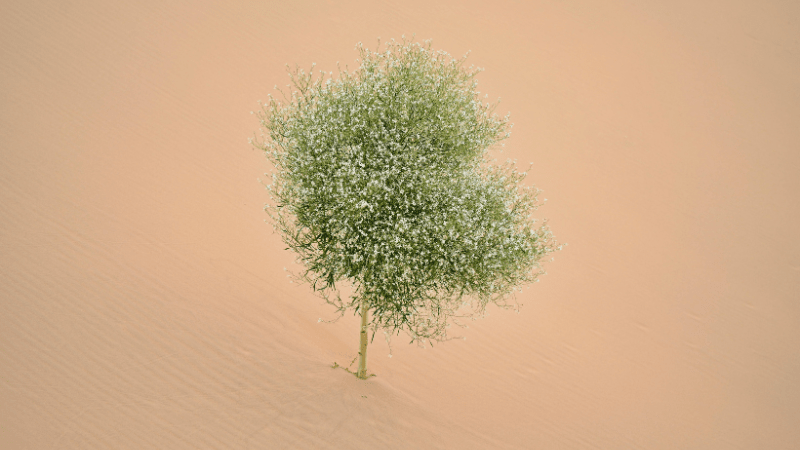
Nutrient Acquisition: refers to the method by which living things, including plants, acquire the vital nutrients required for their survival and growth. particularly refers to the way that desert plants obtain nutrients in a setting where the soil is frequently deficient in both organic matter and nutrients.
Nutrient-Deficient Soils: Desert soils are typically low in nutrients like nitrogen, phosphorus, and potassium, which are vital for plant growth. This scarcity of nutrients makes it challenging for plants to thrive
Symbiotic relationships: Some desert plants form symbiotic relationships with soil microorganisms such as nitrogen-fixing bacteria. These bacteria live in the plant’s roots and convert atmospheric nitrogen into a form that the plant can use, helping the plant obtain the nutrients it needs.
Saline Soil Tolerance: Some desert plants have adapted to thrive in saline (saline) soils, which are common in desert environments. They may have specialized glands to excrete excess salt, allowing them to survive where other plants cannot.
Nutrient Cycling: Desert plants also play a role in nutrient cycling, where they contribute to the replenishment of nutrients in the soil through the decomposition of organic matter
Desert soils are often low in nutrients, making it difficult for plants to get the resources they need to grow. However, desert plants have developed several strategies to cope with these nutrient-deficient conditions.
One strategy is the development of symbiotic relationships with soil microorganisms. For example, many desert plants, including legumes such as mesquite, form associations with nitrogen-fixing bacteria in their roots. These bacteria convert atmospheric nitrogen into a form that plants can use, providing an important nutrient often lacking in desert soils.
Another strategy is the ability of some desert plants to tolerate and thrive in saline (saline) soils. For example, salt bushes (Atriplex spp.) have specialized glands that secrete excess salt, allowing them to survive in environments where other plants cannot.
“The Role of Desert Plants in Ecosystems and Societies“

covers the multifaceted importance of desert plants. Here’s a detailed breakdown of how desert plants contribute to both ecosystems and human societies:
Niche Support: Desert plants provide essential habitat and resources for a variety of animal species, including insects, birds, mammals, and reptiles. For example, cacti often offer shelter and food for species such as birds and insects.
Biodiversity hotspots: Despite harsh conditions, deserts are home to unique and highly adapted species of plants and animals, which contribute to global biodiversity.
Erosion Control: The root systems of desert plants help stabilize soil and prevent erosion. Their presence reduces the effects of wind and water erosion on the desert landscape.
Nutrient cycling: Desert plants contribute to nutrient cycling by decomposing and enriching the soil with organic matter.
Water Retention: Many desert plants have adapted to conserve water through specialized structures such as thick, waxy leaves or deep root systems. They play a role in maintaining the hydrological balance of their environment.
Microclimate Regulation: Some desert plants, such as trees and shrubs, can support moderate temperature and humidity levels in their immediate environment.
Survival Mechanisms: Desert plants exhibit remarkable adaptations such as drought resistance, low transpiration, and efficient water storage. These adaptations are important for their survival in extreme conditions and offer insights into evolutionary biology.
cultural symbolism
Spiritual and symbolic significance: Desert plants often have symbolic meanings in different cultures. For example, a cactus can represent endurance and resilience, while a date palm is a symbol of life and fertility in many Middle Eastern countries.
Rituals and Festivals: In some cultures, desert plants are integral to rituals and festivals. They may feature in traditional dances, ceremonies, or celebrations.
Desert plants hold deep cultural symbolism in various societies around the world. These hardy plants, which survive and thrive in some of the most extreme conditions on Earth, are often seen as powerful symbols of resilience, endurance, and life in adversity.
Education and Research
Scientific study: Desert plants are subjects of scientific research, offering insights into plant adaptations, survival strategies, and climate change. They are also used in educational programs to teach about ecology and botany.
The intersection of environment and culture
Conservation Efforts: Understanding the ecological and cultural importance of desert plants can advance conservation efforts, ensuring that traditional knowledge and practices are preserved along with ecological health.
Community Engagement: Collaboration efforts between scientists, conservationists, and local communities can enhance the conservation and sustainable use of desert plant species.
B. Flexibility and Adaptability
Cultural Adaptations: As climate conditions change, the adaptations of desert plants may reflect broad patterns of ecological resilience. Communities dependent on these plants may need to adapt their practices in response to changing conditions.
This holistic approach highlights how desert plants are integral to both their natural environment and human cultures, emphasizing the interconnectedness of ecological health and cultural processes.
In addition to their incredible survival strategies, desert plants play an important role in their ecosystems. They provide food, shelter and habitat for a wide range of desert animals, from insects to mammals. Prickly pear cactus (Opuntia spp.), for example, is an important food source for desert animals.
animals such as rodents, birds, and insects Desert plants also have cultural and economic importance. Indigenous peoples have long relied on these plants for food, medicine and materials. For example, agave has been used for thousands of years to produce fiber, food, and fermented beverages.
Today, desert plants are valued for their ornamental and horticultural uses, with many species cultivated for drought-tolerant landscaping.
Examples of interesting desert plants
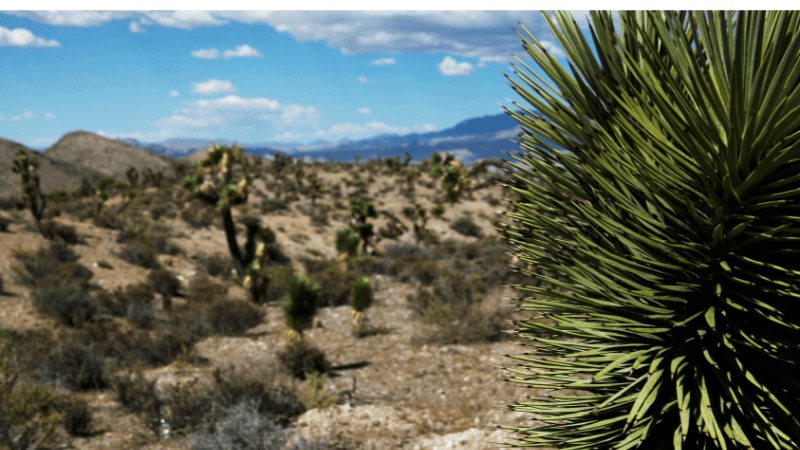
While all desert plants are remarkable in their own right, some stand out for their unique adaptations and cultural significance.
- Saguaro Cactus (Carnegiea gigantea): The saguaro is a popular symbol of the American Southwest. This giant cactus can grow to over 12 meters (40 feet) tall and live for over 150 years. Saguaros are adept at storing water, their luscious surfaces allow them to spread and store water during rainfall.
- Their longevity and large presence make them a keystone species in their ecosystem, providing food and habitat for numerous animals.
- Wellwitschia (Wellwitschia mirabilis): Native to the Namib Desert of Africa, Wellwitschia is one of the most unusual plants on earth. It has only two leaves, which grow continuously throughout life, often reaching several meters in length. Despite living in one of the harshest environments on the planet, Velotsia can live up to a thousand years.
Its deep roots allow it to access water in arid environments, and it adapts well to the temperature extremes of the desert.
Conclusion: Lessons from Desert Plants
Food: Many desert plants provide edible parts, such as fruits, seeds, and tubers. For example, the prickly pear cactus (Opuntia) is used in a variety of dishes in the regions where it grows.
Medicine: Indigenous peoples have historically used desert plants for their medicinal properties. Plants such as aloe vera and creosote bush have been used in traditional medicine and healing.
Economic value
Crafts and materials: Desert plants such as saguaro cacti and yucca have been used in traditional crafts and construction. For example, fibers from the yucca plant are used to make ropes, mats, and baskets.
Tourism: Desert landscapes with unique flora attract tourists and nature lovers, who contribute to the local economy.
The secret life of desert plants reveals much about the resilience and adaptability of life on Earth. These plants have transformed some of the most challenging environments into thriving habitats, demonstrating the incredible diversity of strategies that life has developed to survive.
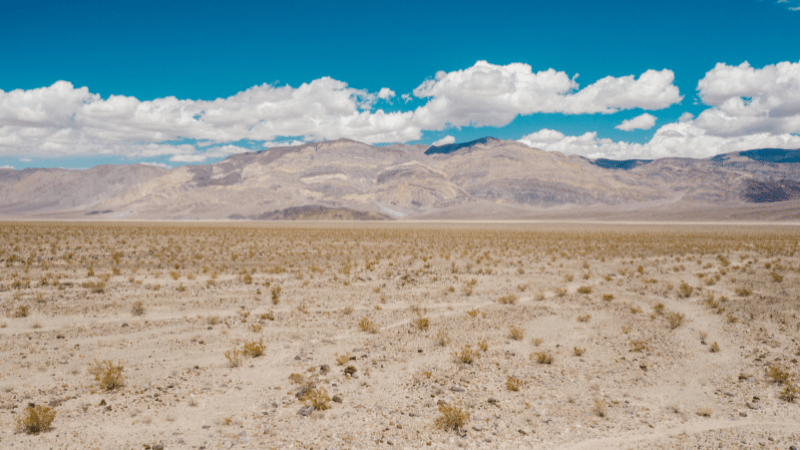
Beyond their biological interest, desert plants also offer valuable lessons for sustainable living. As we face increasing challenges related to climate change and water scarcity, the adaptations of desert plants inspire how we can better manage resources and design systems that are resilient to environmental stressors. Provisions are flexible.
Desert plants are not the only survivors. They are experts who have turned adversity into opportunity. Their ability to thrive where there might be little is a testament to the power of adaptation and the ease of life. Whether we admire them for their beauty, their resilience, or their ecological importance, desert plants are a reminder that life can flourish even in the harshest conditions, given the right tools and strategies


